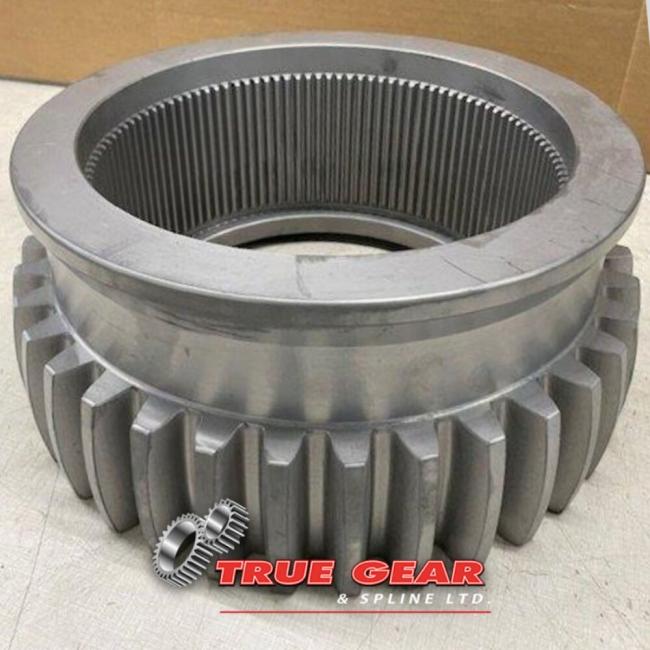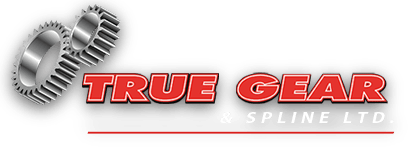Keep up to date with us on the latest industry news as well as what's going on at True Gear & Spline Ltd. We also post articles for insider tips and tricks, so make sure to check back frequently.
Reasons For Gear Coupling Failures And Their Treatment

Torque transmission is an important aspect of mechanical engineering. While gears and splined shafts form the foundation for torque transmission, another element works silently behind the scenes: gear couplings. Comprising two flexible joints along with internal and external teeth, the primary purpose of gear couplings is to accommodate misalignments between two rotating shafts.
Misalignments are common, especially in high-torque applications. While couplings are considered reliable, compact, and effective, they are prone to occasional failures. However, they can be prevented with proper care and maintenance. After all, even the most sophisticated mechanical components demand minimal maintenance for optimal performance and longevity. In this blog, we list the common reasons for gear coupling failure and how you can deal with them. So, read until the end to make an informed decision.
Misalignment During Installation
How It Happens
Poor Shaft Alignment
Installation needs to be done with precision and utmost care. Even the slightest mistake in this step can have detrimental effects. Poor shaft alignment is one of the primary causes of misalignment during installation.
Lack Of Precision Tools
A coupling’s installation must be done with the help of precision tools. Only with tailor-made tools can you achieve perfect alignment of shafts and prevent their unnecessary movement.
Effects on Gear Coupling
Premature Wear and Tear
Misalignment during installation has detrimental effects on gear couplings. Accelerated wear of gear teeth is one of the most common side effects of misalignment. If gear teeth are prematurely worn off, it leads to problems like slippage and loss of energy.
Vibrations & Early Fatigue
Although vibrations are common in mechanical operations, leaving them unchecked has detrimental effects. Unchecked vibrations lead to early fatigue and premature wear and tear. This eventually leads to an increase in maintenance and repair costs.
Treatment & Prevention
Laser Alignment
“Eyeballing” it might sound easy, but it is not the scientific way to do things. Using laser alignment tools ensures accurate positioning of shafts and prevents misalignments during installation. The precision of laser alignment tools is unmatched, making it valuable for coupling installation.
Regular Alignment Checks
Making alignment checks a part of maintenance goes a long way in ensuring uninterrupted torque transmission. Make it a point to check alignment if an equipment or component has been replaced. Part replacements always come with a risk of compromised alignment.
Inadequate Lubrication
Common Lubrication Mistakes
Lubrication is important to ensure the smooth transfer of energy between the shafts. Even a gear coupling cannot accommodate misalignment without adequate lubrication. One of the most common lubrication mistakes is using the wrong type of lubricant. To put things in perspective, using the wrong lubricant is similar to driving a gasoline car on diesel.
Insufficient Amount or Frequency
How much and how often? This is a question operators must think about to ensure optimal performance of gear couplings. Insufficient amount and infrequent application of lubricants lead to compromised performance.
Signs of Lubrication Failure
Overheating
Friction and heat are common byproducts of torque transmission. However, overheating is something you must keep an eye out for. It is often a classic telltale of lubrication failure. If left unchecked, overheating damages components.
Abnormal Noises
The unusual rattling or grinding noise is indicative of lubrication failure. The use of the correct lubricant, in the right amount and frequency, keeps overheating and abnormal noises at bay.
Treatment & Best Practices
Use Recommended Lubricant
Consult with expert technicians to figure out the recommended lubricant for gear couplings. Using the recommended lubricant ensures optimal performance and longevity.
Establish Lubrication Schedules
Lubricants gradually wear off, exposing couplings to issues like friction and overheating. It is important to establish lubrication schedules to ensure seamless torque transfer.
Excessive Torque Or Overloading
Wrong Coupling Size
Dimensions need to be accurate down to the last millimetre to prevent gear coupling failures. The wrong coupling size will lead to inevitable coupling failure, which is due to excessive torque and overloading.
Unexpected Load Spikes
Power quality plays an important role in torque transmission. An unexpected load spike causes excessive torque and overloading. The gear coupling might not be designed to handle such a sudden spike, causing failure and damage.
Damage Symptoms
Cracked Hubs or Teeth
Even the smallest crack in the hub or teeth causes coupling failure. Such cracks can be considered as the direct symptom of excessive torque or overloading.
Frequent Breakdowns
An uninterrupted operation is the key to seamless torque transmission. A gear coupling that frequently breaks down is counterproductive. You must consider frequent breakdowns as a result of excessive torque and overloading.
Fixes
Load Calculations
You must work with a gear manufacturer to calculate the precise load that the coupling has to bear. The right load calculation further helps with material selection, determining accurate dimensions, and ensuring precise tolerances.
Use of Torque Limiters
Torque limiters safeguard gear couplings from unexpected load spikes and excessive torque. They work by either slipping or disconnecting drives or shafts in case of shock loads or machine jams. There are different types of torque limiters; consulting an expert is recommended to source the right one.
Manufacturing Defects Or Poor Quality Control
Detecting Early Issues
Manufacturing defects are best dealt with when detected early. Look out for visual cracks or burns on the gear couplings. If you spot such damage, it is best to get the couplings replaced as soon as possible. Manufacturing defects can cause significant coupling failures, such as performance drops under normal loads.
How To Handle
You must partner with a trusted gear coupling manufacturer and supplier to ensure top-notch performance. True Gear & Spline Ltd. in Cambridge, Ontario, manufactures the best gear and sleeve couplings. Our products meet the recommended AGMA standards. We have quality checks in place to ensure the highest performance and safety standards.
Conclusion
Misalignment during installation, inadequate lubrication, and manufacturing defects all lead to gear coupling failures. Improper material selection, environmental factors, excessive torque, and improper tolerances are also significant factors leading to gear coupling failures. You can trust True Gear & Spline Ltd. in Cambridge, Ontario, for all your torque transmission requirements. We use CNC machining to manufacture and supply the best gears, splined shafts, as well as gear and sleeve couplings. Call 519-653-1301 to get a free quote or place an order.








